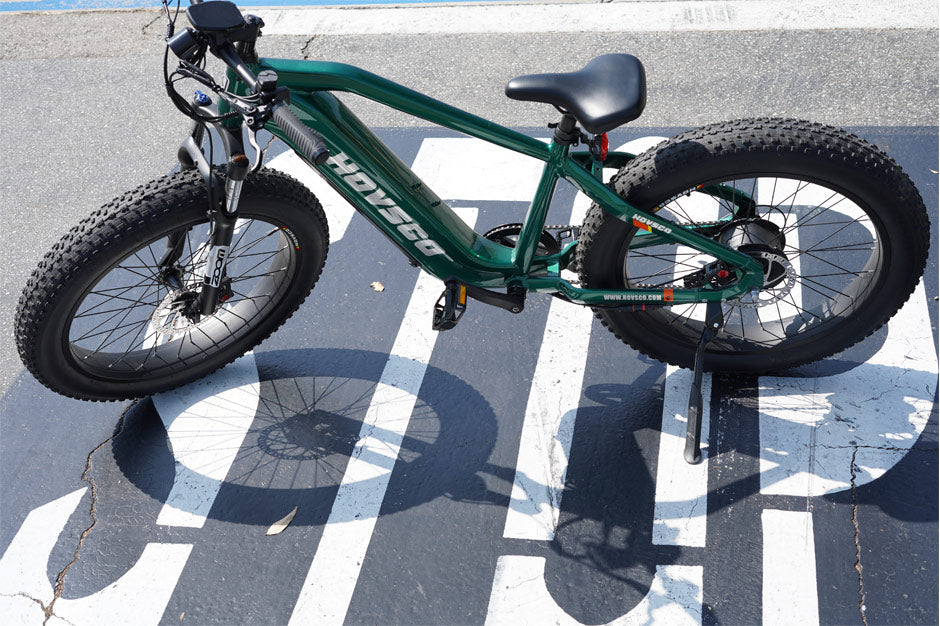
Electric Bikes: The Future of Commuting?
Cycling is a hobby for children and adults across the world. However, with the impending doom of climate change around us, this hobby must soon become a means of commuting from one place to another. Moreover, the modern world is troubled by problems like excessive traffic, pollution, various health concerns, and rising fuel prices which makes driving a hazard, not to mention how it affects the environment.
There is a one-stop solution to these problems- electric bikes. There are many who have been shifting to this eco-friendly, economical, and more accessible mode of transportation over the years. We believe electric bikes are the future of commuting. Here’s why.

1.It's commute-friendly
Traffic congestion is a menace, especially in the mornings when you are headed to work and are getting late for an important meeting. E-bikes are well-suited in such conditions as they reduce traffic in general due to the vehicle's smaller size. In addition, cities worldwide are becoming more populated with each passing day, which has increased the need for e-bikes. In many countries, e-bike users are predicted to double in the next few years.
2.Requires less effort
E-bikes are different from traditional cycles as they are electronically driven. This means that riders require to put less effort. E-bikes are also very speedy and can outrun cars, buses, and other means of transportation. So while riding traditional cycles to work and other places might seem too much work for some people, an electronic bike is an excellent solution as it will get you to the destination quicker and without as much effort.
3.Ideal for different age groups
E-bikes can be ridden by young and older adults alike. It requires less effort, and the rider does not necessarily have to be of a certain shape to drive an e-bike. Such bikes are also a great way to encourage those trying to get fit and healthy.
Various studies have proven that e-bikes offer a significant source of workout and exercise, unlike most people think. For example, many older people feel they are too old to ride bikes and might not have the physical prowess to do it. With e-bikes, cycling becomes effortless for such people.
4.Easy to recharge and more affordable than electric cars
Many individuals might think of buying an electric car, but it is often inconvenient to recharge it. This is so because electric cars require special charging networks. However, one can easily recharge e-bikes since it requires a regular power socket. Moreover, an e-bike costs relatively lower than an electric car. This is a major reason why we are headed to a future where e-bikes will create a niche market for buyers and eventually become commercially popular.
5.Provides health benefits
There is a myth going around that e-bikes do not contribute to improving one’s health. We would like to bust this myth by pointing out the numerous studies that have been conducted and have proven that e-bikes can be just as healthy as traditional cycles. Furthermore, they make riders healthier over time. An example is the pro rider and cycling coach Tom Bell who rode an electric bike up a mountain, and his heart rate was observed to go as high as 198 BMP. In addition, E-bikes have an assistance option that you can turn off when you want to convert e-bike riding into a mode of exercise.
Tips on becoming healthy with an e-bike
1.Start slowly
The trick is to start riding the e-bike slowly at the beginning. You must take baby steps to achieve maximum health benefits instead of expecting to become a pro biker in a day. Your fitness cycle is low when you start cycling initially, so you must slowly allow your body to adapt to the increasing speed.
2.Plan a route beforehand
If you aim to exercise and improve your health by riding an e-bike, it is best to plan your cycling route beforehand and select a challenging path. A challenging terrain will require you to pedal harder, contributing to body exercise. However, always remember to start slow. It's best to start with easy trails and eventually head to a challenging one.
3.Start with lower assistance
You need to check your stamina in the beginning and, accordingly, start with lower assistance. This will give you a better workout than starting with all the help the bike offers. For example, keep the assistance levels at the lowest level when riding on a flat road or even turn off the motor. If you start getting too tired, you can always select the medium level of assistance. You must save the top-level assistance for challenging terrains when peddling gets too exhausting.
4.Have recovery plans in place
Recovery is a crucial part of workouts of any kind. Even in this case, you must have a recovery plan in place after you finish your ride. This means riding the bike through different levels of assistance as your stamina demands. In addition, you must have a proper and healthy diet in place. Rest and sleep are essential as well. All these things combined will help you achieve a healthier life.
Conclusion
So yes, e-bikes are definitely the future we are headed towards, and it's a bright one. The world needs more environment-friendly and economical transportation options to commute wherever one travels. E-bikes help curb pollution levels, and they are inexpensive, easy to recharge, and a great way to exercise and get healthy.
Even though the market does not have too many e-bike companies yet, the future will be different, as already discussed in this article. There will be a booming market, and e-bikes will soon be a common mode of transportation for many people.
































Leave a comment